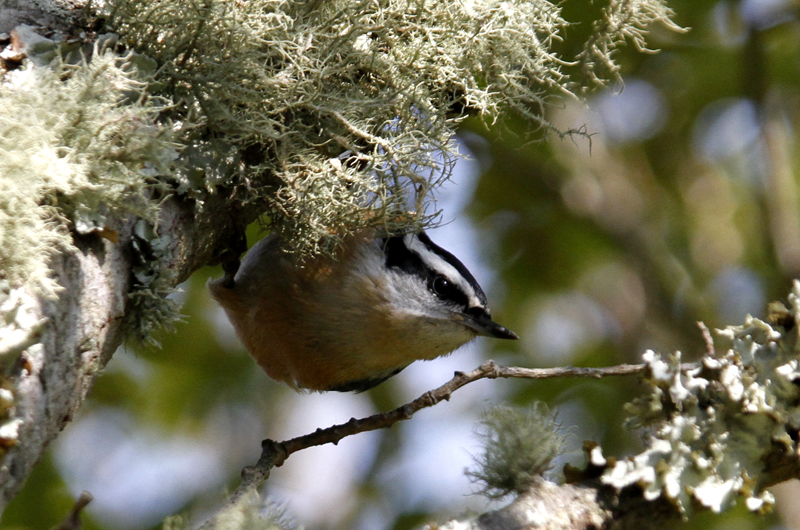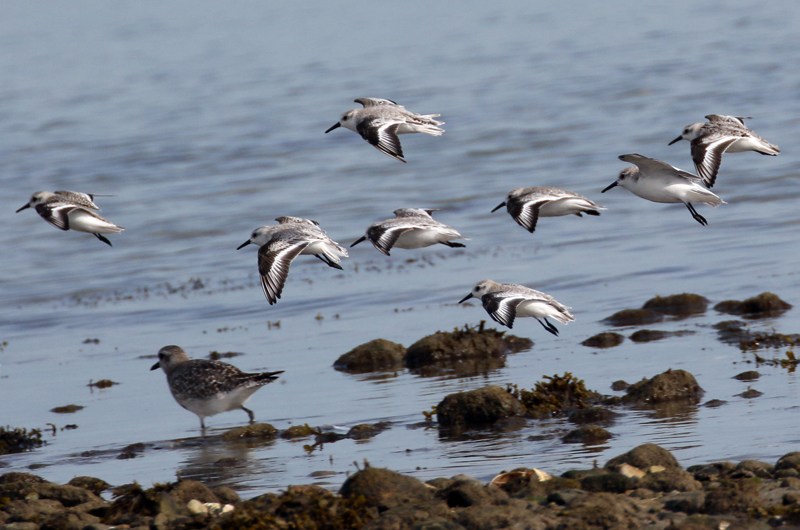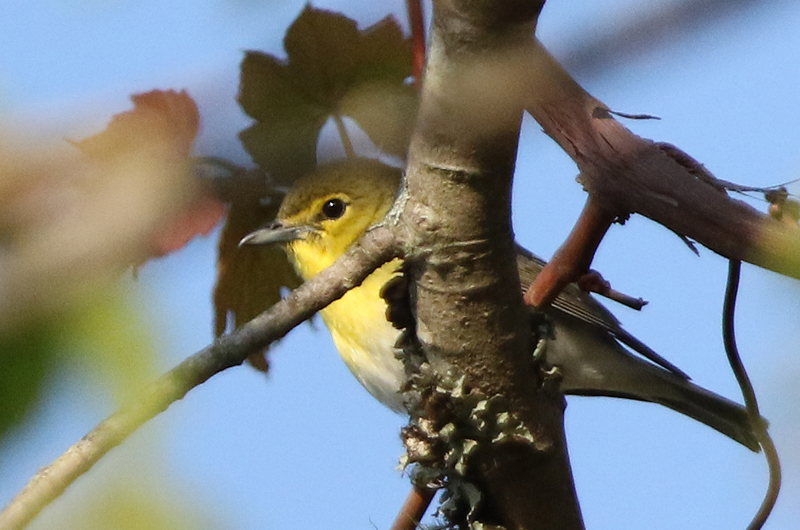Have you ever wondered how birds decide whether tonight is the night for them to continue their southward migration? Thanks to decades of research, we now have some answers to this question.
The passage of a cold front generally brings a period of sustained northwesterly winds. Migrating birds will utilize these favorable winds to increase the efficiency of their flight; it is easier to fly southward with a tailwind pushing them along. They navigate using the sunset, the stars and the Earth’s magnetic field, and their navigation is very accurate as they move between their breeding site and their wintering site, even when thousands of miles separate the two locales.
Most songbirds tend to migrate at night. They may leave an hour or two after dark, and may fly for much of the night, perhaps travelling 300 miles or more. Their nocturnal travel means they avoid the hawks that eat birds — mostly falcons and accipiters. Another reason for nocturnal migration is energetic; it is easier to maintain a constant body temperature when flying through the cooler and more stable air of the night sky.
The migrants are in constant communication with each other. When there is a high volume of migrants, their chirps and twitters can easily be heard as they fly over quiet neighborhoods. Listen for them, and then look for them the next morning. They may be passing through your neighborhood.
Bird Sightings
Ken Magnuson birded Aquinnah and Chilmark on Sept. 21 and found a Cape May warbler at the cliffs. At the Gay Head Moraine he found Nashville warbler, blackpolls and a yellow-throated vireo, while a prairie warbler was found at Squibnocket.
Mr. Magnuson spotted a yellow-billed cuckoo at the Edgartown Golf Club on Sept. 25. This secretive species is never easy to find unless they vocalize, and they are generally silent at this time of the year. This one was silent but it flew right in front of him and landed in a nearby willow. With one cuckoo seen, how many others are there that are not detected?
Ruby-throated hummingbirds are still hanging around. Sioux Eagle reports a juvenile male at her feeder on Sept. 23, more notable because she had been seeing only females. The same day Charlie Kernick had an adult male as well as several females. Tweed Roosevelt reports that one is still coming to his feeder as of Sept. 24.
On the evening of Sept. 24, Lindsay and Blake Allison saw a woodcock on Dike Road, the first one they had seen in a few years. This species is easy to find during the breeding season, when the males are conducting their aerial courtship dances. At all other times they are denizens of young, densely vegetated forests, where their plumage matches the brown forest floor.
A black-crowned night-heron was seen by Danguole Budris as it flew over Lambert’s Cove Beach at sunset on Sept. 24. This was the second time she had seen one there at dusk in the past few days. And Charlie Kernick reports that two of them flew over him at Town Cove (Tisbury Great Pond) on Sept. 18. Dusk is one of the best times to see this species as they are either heading out to feed or heading home to roost. Their loud and distinctive “quawk!” can confirm their presence even if they are not seen.
Soo Whiting and Flip Harrington birded Tisbury Great Pond by boat on Sept. 24 and their highlights were 12 Forster’s terns, sharp shinned hawk, spotted sandpiper, greater yellowlegs, sanderlings and American oystercatchers.
It is always fun to see a peregrine falcon, but on Sept. 23 Lanny McDowell got another benefit: a peregrine flushed all the birds from Norton Point, and one of the birds that flew was an American golden plover. Unless you are very familiar with this species, they are easier to distinguish from their cousins the black-bellied plovers when in flight. Their dark tail and lack of black wing-pits are seen more easily.
Chesca Zayda observed a golden plover mixed in with black-bellied plovers at Little Beach on Sept. 21. She also found ruddy turnstones, sanderlings, least sandpipers, semipalmated plovers and oystercatchers. My Sept. 24 guided birding tour went to Little Beach too, but we could not find the golden plover. We added four species of gulls (herring, great black-backed, ring-billed and laughing) and a flock of at least seven greater yellowlegs tucked into the marsh grass.
Allouise Waller Morgan heard a screech owl or two calling as she was standing at her front door on the night of Sept. 22. This species has been more vocal in recent months than I recall. It is the young of the year that are attempting to establish their own territories.
Southbound migrants are passing through, so go look for them and please be sure to report your sightings to birds@mvgazette.com.
Robert Culbert leads Saturday morning Guided Birding Tours and is an ecological consultant living in Vineyard Haven.







Comments
Comment policy »